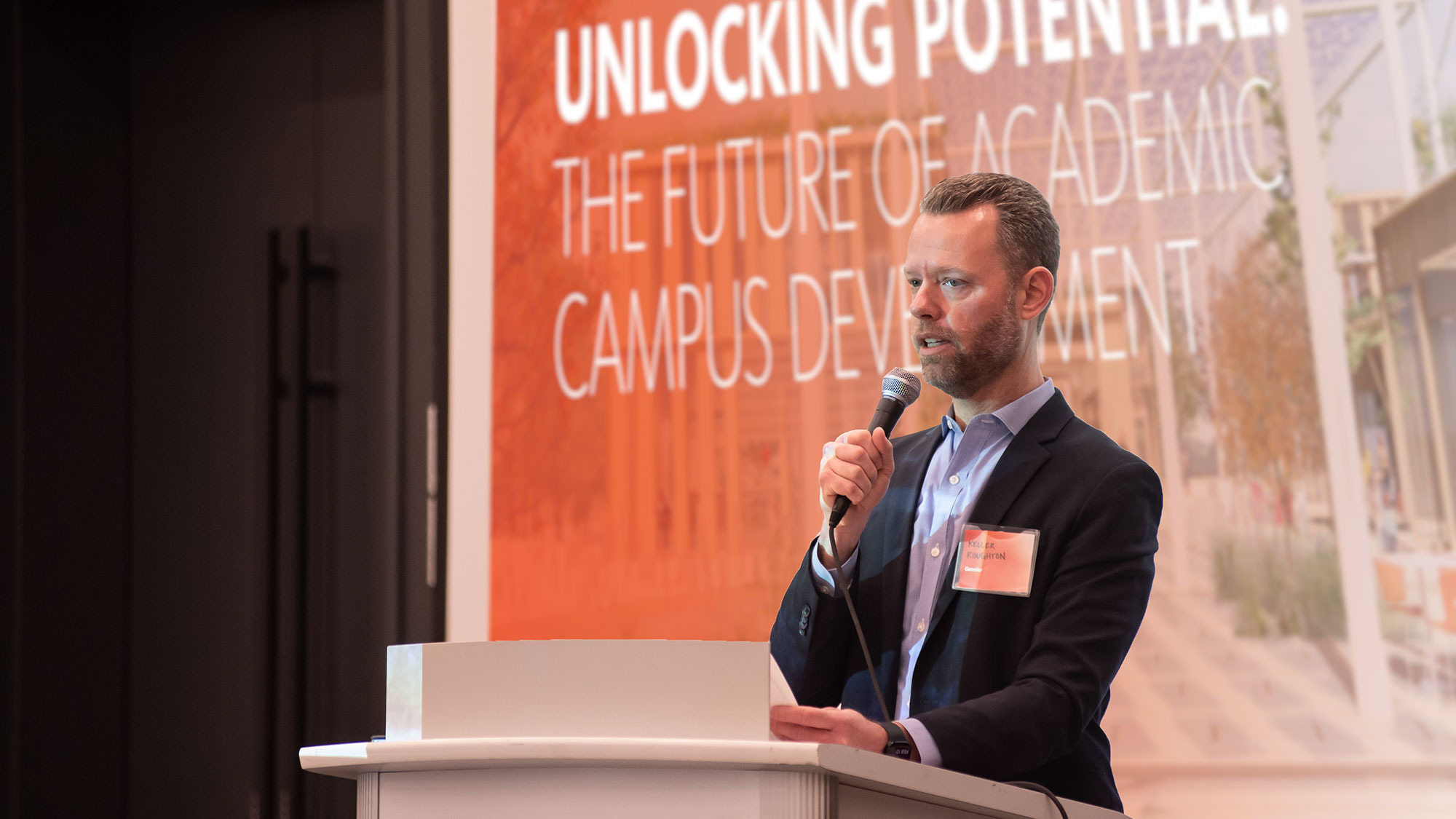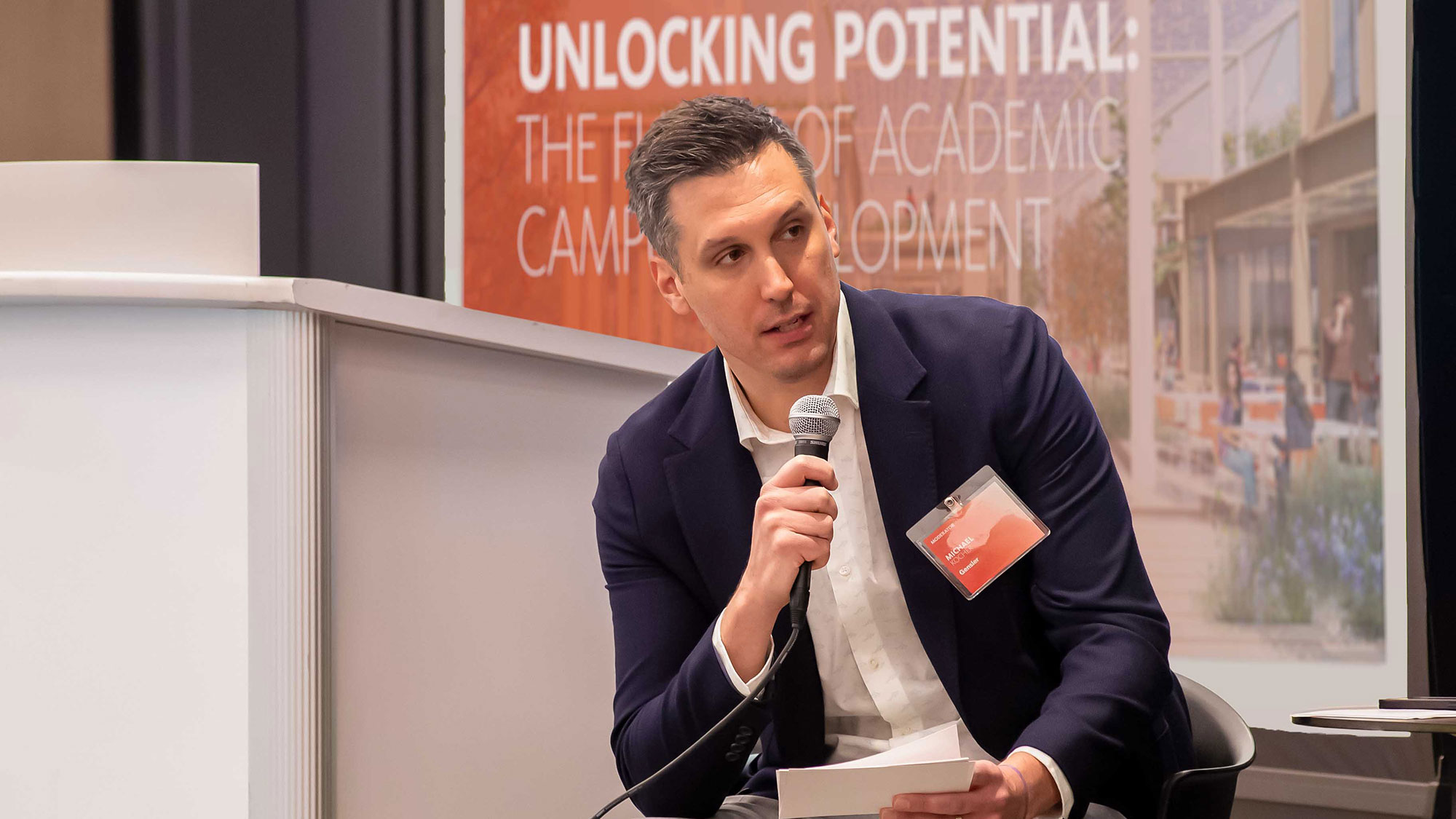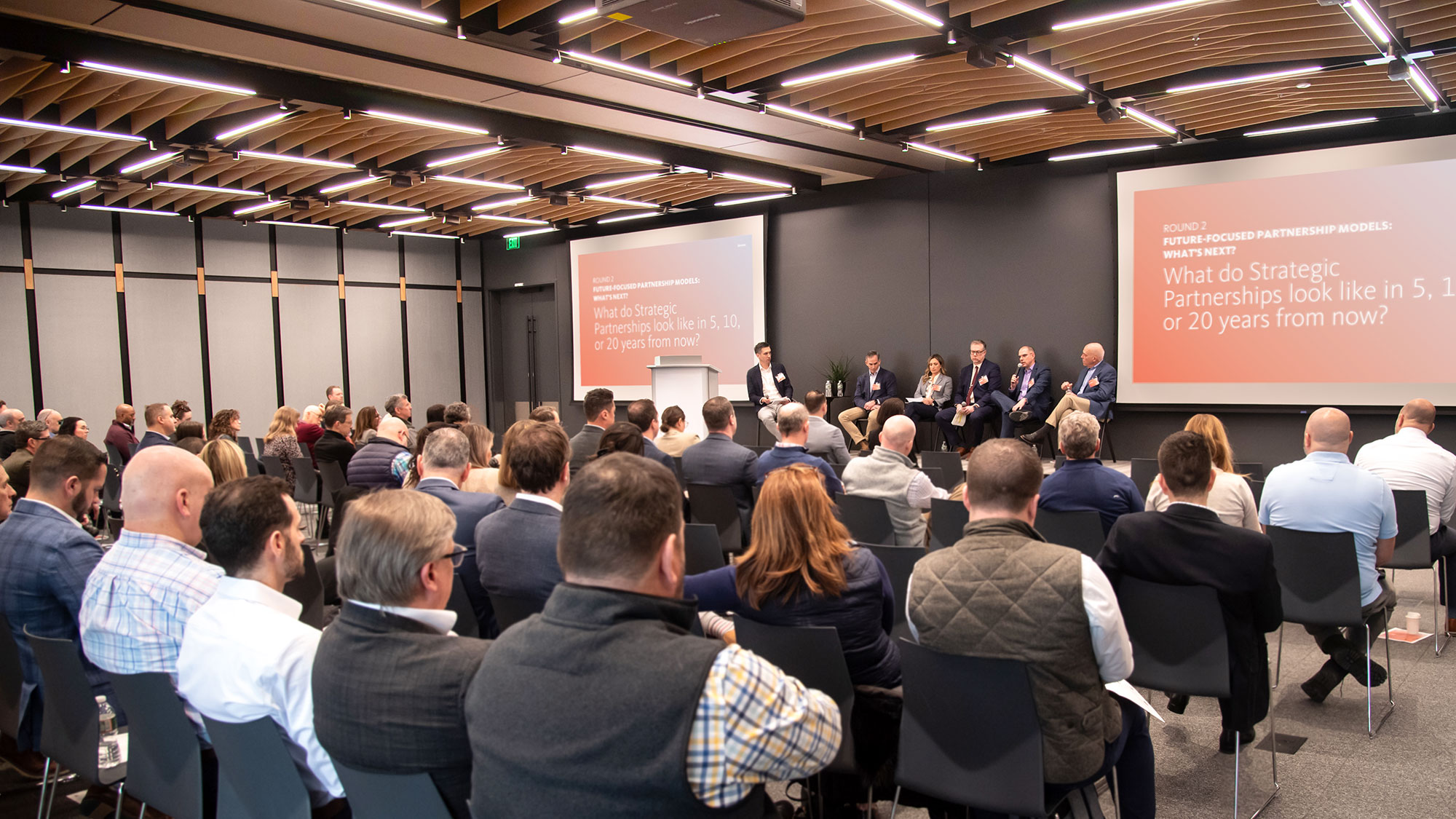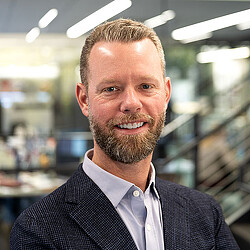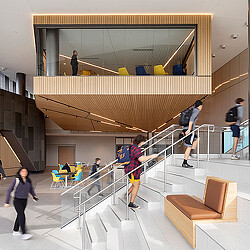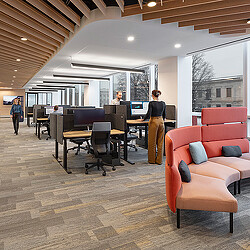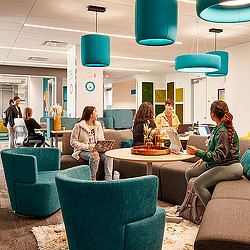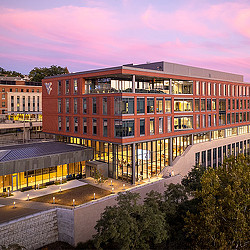How Strategic Partnerships Are Shaping Academic Campus Development
Institutional-private sector collaborations allow universities to expand their reach, optimize real estate, and enhance campus vitality, while providing developers with stable, high-value investment options.
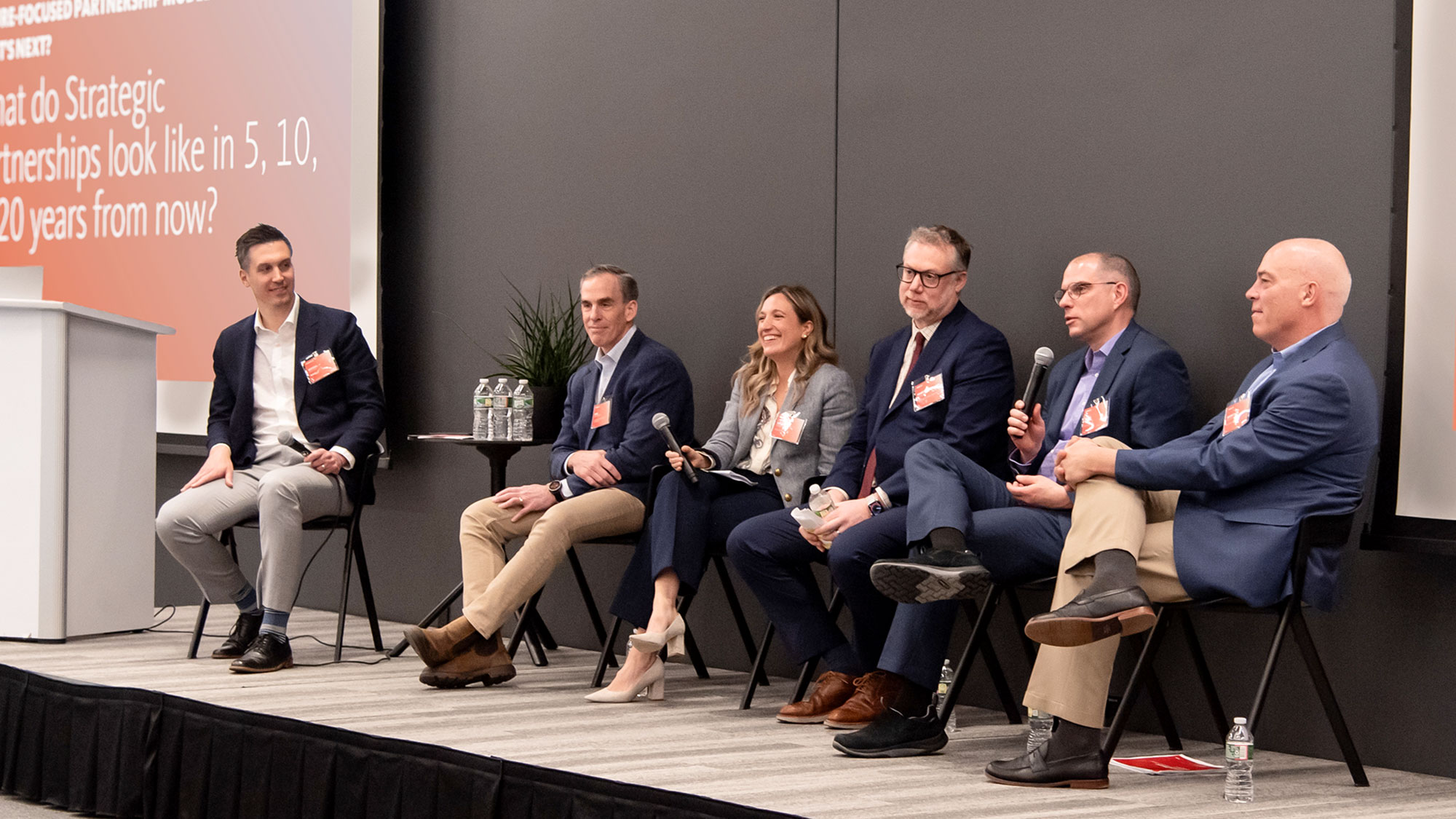
Higher education is undergoing a profound transformation, with colleges and universities facing unprecedented financial pressures and enrollment challenges, rising operational costs, and evolving student and faculty expectations. At the same time, developers are navigating volatile market conditions and seeking stable, long-term investment opportunities.
In this changing landscape, strategic partnerships between institutions and the private sector are emerging as a powerful tool to modernize infrastructure, enhance student experiences, and create dynamic, economically sustainable campuses.
Unlocking Future Potential
Higher education real estate strategy is no longer just about buildings — it’s about creating sustainable ecosystems that drive economic growth, workforce development, and long-term resilience.
The impending decline in traditional-age college students — projected at 15% between 2025 and 2029, according to the National Center for Education Statistics (NCES) — poses a significant challenge for higher education institutions, but they also open the door to innovative solutions. With fewer students enrolling, colleges and universities must rethink their financial models, optimize underutilized assets, and find new ways to remain competitive. At the same time, federal and state funding cuts threaten research initiatives, making stronger industry ties essential for sustaining innovation.
Strategic partnerships between institutions and developers offer a mutually beneficial path forward. For universities, these collaborations provide access to private capital, innovative development expertise, and long-term operational efficiencies. Partnerships can help institutions modernize infrastructure, expand research facilities, and create vibrant mixed-use environments that attract students, faculty, and industry partners — ensuring long-term financial sustainability.
For developers, higher education presents a unique opportunity to invest in stable, high-value projects with built-in demand. As long-term stewards of real estate, partnerships with universities offer developers access to well-located land, mission-driven projects, and reliable occupancy from students, faculty, and affiliated industries. By aligning their vision with institutional goals, developers can help create thriving innovation districts, next-generation student housing, and dynamic research hubs that serve both academic and industry needs.
To explore how these partnerships are shaping the future of campus development, we brought together industry leaders from the Massachusetts Division of Capital Asset Management and Maintenance, Gilbane Development Company, Northeastern University, MIT Investment Management Company, and Redgate. Our discussion revealed insights and key strategies for institutions to maximize the value of their real estate, balance stakeholder priorities, and drive long-term success through collaborative development models.
Here are the key takeaways from the discussion that we believe will be critical in shaping the future of campus environments:
1. Public-Private Partnerships Need to Be More Strategic Than Ever
- Future Vision: Partnerships will increasingly focus on aligning with institutional goals and long-term financial sustainability, transforming campuses into vibrant, mission-driven environments.
- Strategic Approach: Universities will leverage assets more strategically, moving beyond facilities management to comprehensive campus development.
2. Institutional and Developer Priorities Must Be Balanced
- Future Vision: Successful partnerships will require a clear alignment between institutional missions and private sector expertise, ensuring mutual benefits and long-term stability.
- Stakeholder Engagement: Projects will integrate input from students, faculty, and local communities, fostering a collaborative approach to campus development.
3. Mixed-Use and Innovation Districts on Campus Will Drive Industry
- Future Vision: Campuses will evolve into integrated, mixed-use environments that drive economic growth and industry collaboration, creating hubs for research, entrepreneurship, and talent development.
- Economic Impact: Well-designed projects will enhance institutional identity, boost regional economies, and attract top faculty and students.
4. Housing Needs to Be Viewed as a Strategic Asset, Not Just a Cost Burden
- Future Vision: Universities will rethink housing strategies to attract and retain talent, viewing housing as a long-term investment that supports institutional growth.
- Innovative Models: Institutions will explore public-private financing models, affordability incentives, and mixed-use developments to address growing demand.
5. Public Agencies Continue to Drive Key Development Partnerships
- Future Vision: State and municipal agencies will increasingly turn to partnerships to leverage assets and support long-term campus growth, balancing financial feasibility with community impact.
- Collaborative Development: Early collaboration with policymakers will align development goals with regional economic priorities, ensuring projects benefit both institutions and surrounding neighborhoods.
The Opportunity & Next Steps
The future of campus development is bright, with numerous opportunities for institutions and developers to collaborate on groundbreaking projects. Campuses have the unique opportunity to transform into bustling innovation hubs, where research, entrepreneurship, and industry collaboration thrive. Mixed-use development will seamlessly integrate academic, residential, and commercial spaces, creating vibrant communities that support institutional growth and regional economies.
As we look ahead, new partnerships between institutions and developers will be essential in meeting the evolving needs of future generations. We invite you to connect with us and explore how we can collaborate to shape the future of academic campus development.
For media inquiries, email .

